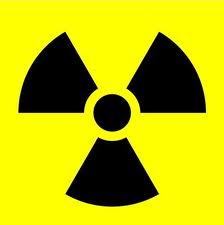Japan: Anti-Nuclear Groups Sound New Nuclear Danger Warnings

Heightened tension on Saturday after a blast at a nuclear facility in Fukushima, 150 kilometres north of Tokyo, eased off after the government reported that the danger had been overstated.
But anti-nuclear experts continued to express concern. “There are many areas that remain unclear in the government’s explanation, which is why we cannot accept that the coast is clear,” Professor Hiroaki Koiwa from the Research Reactor Institute at the national Kyoto University told IPS.
Television footage Saturday afternoon showed a badly scarred Fukushima Number 1 nuclear power plant with white smoke plumes coming out of building. The ceiling and walls were damaged. The building is a part of four reactors that account for 18 percent of Japan’s nuclear power capacity.
The 8.8 magnitude earthquake on Friday forced the automatic closedown of the nuclear power plant, leading to the build-up of radioactive hydrogen inside the turbine building.
The Tokyo Electric Power Company ( TEPCO) which owns the nuclear plant had to release a large amount of hydrogen pressure in the face of reports of a possible core meltdown in the building.
Japanese media quoting experts pointed to widespread radiation contamination if there would be a core meltdown in the plant. People in the area were advised to wear masks.
But TEPCO and the Japan Nuclear Safety Commission reported that earlier estimates of radioactivity of around 1,000 times the normal level, had been overstated.
Chief Cabinet Secretary Yukio Edano told media that TEPCO had successfully been able to release hydrogen pressure that had been building in the concrete containment structure, normally about 1.2 metres thick.
“After the release of the hydrogen, TEPCO reported that radiation level has dropped to 75 siebel units, which is not dangerous to people,” he said. Internationally accepted human limits for tolerating radiation are set at 1000 seibel units annually.
But Koike points out that if TEPCO released the hydrogen pressure using a power supply system to work the pump, what did the company then mean when it reported the shutdown of the facility following the earthquake.
Researchers also question the legitimacy of the latest radioactivity leakage figures stated by TEPCO, pointing out that wind direction plays a key role in setting standards.

Helen Caldicott: Conference on the DANGERS OF NUCLEAR WAR AND NUCLEAR POWER
Montreal. March 18. Centre Saint Pierre, 7.00pm Click for details
Hideki Ban, a leading anti-nuclear power activist and head of the Citizen’s Nuclear Information Centre, said at a press conference Saturday evening that the shocking damage to the Fukushima nuclear power plant points to the need for continued careful monitoring for radioactive leaks, despite government and TEPCO attempts at defusing tension.
“The Fukushima plant explosion symbolises the terrible threat to human safety in Japan that is highly vulnerable to earthquakes. This is another opportunity to stop this dangerous nuclear power build-up,” he told media.
With some press reports hinting at widespread leaks leading as far as Tokyo, the public have been shopping hard for basic food items, leading many supermarkets to report cleaned shelves.
Ban contends hydrogen pressure is rising in the turbine building and the key to containing a major radiation leak is now in the hands of TEPCO that must work hard to release the pressure.
Anti-nuclear power activists also point out that the Fukushima plant was built in the 1970s, and does not contain the superior modern safety standards of today.
One-third of power in Japan is nuclear. Key nuclear reactors are located in seismic areas. Accidents have plagued the plants over the last decade, leading to deaths among workers and several evacuations.

